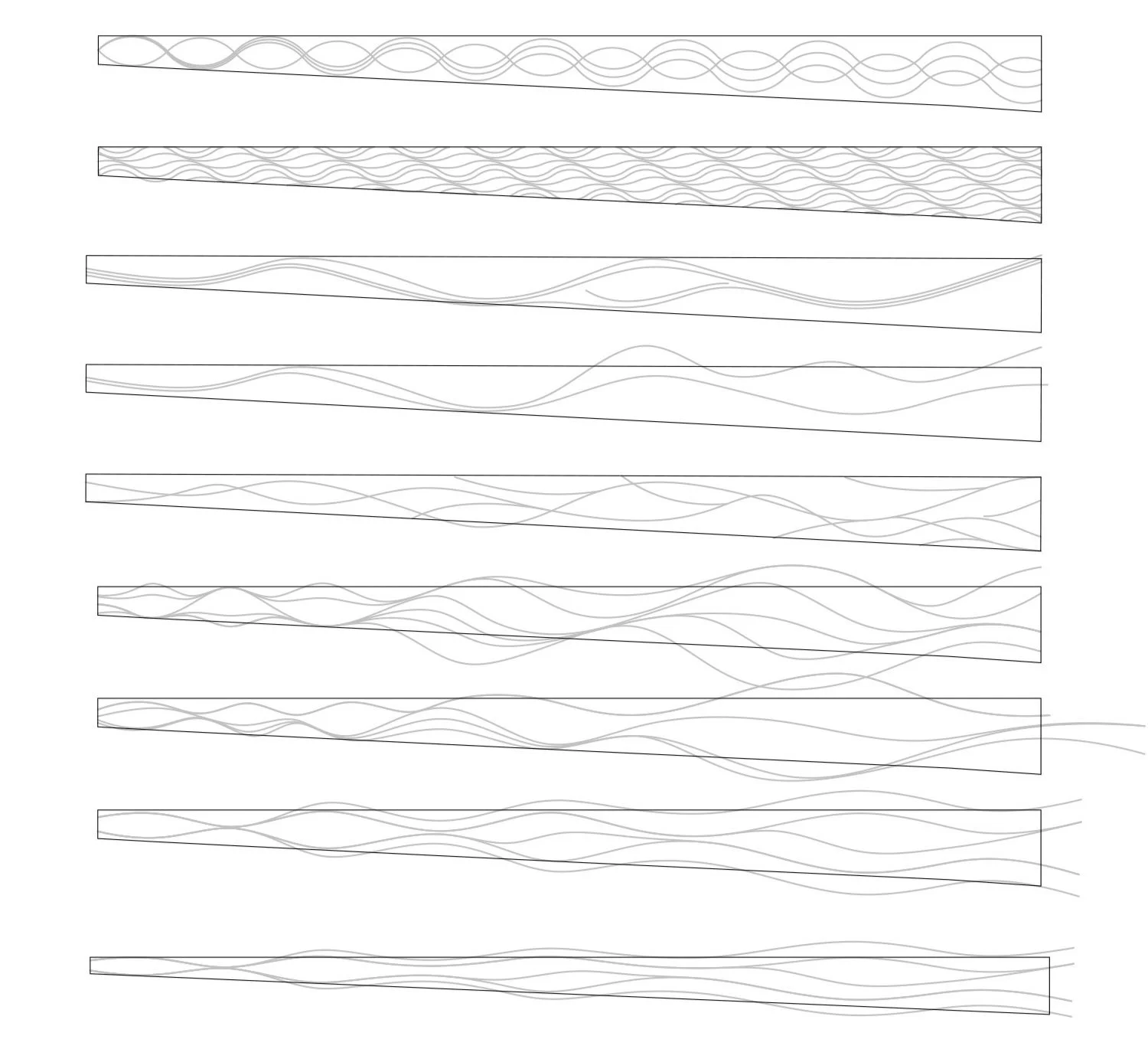How parametric design supports creative exploration.
How to turn a hand-drawn dna strand into an elegant art wall? Parametric design. Using this computational design method with Grasshopper and Rhino, our team can explore and easily iterate on complex geometry without exhausting our budget on projects. This type of tool is especially useful for small offices because it automates time-consuming (and tedious) tasks by consolidating them into generative algorithms for more fluid manipulation of otherwise cumbersome 3d models.
For example, when working on a biotech campus in South San Francisco, we wanted to create an artistic interpretation of RNA transcription for a feature wall that serves as the gateway to the campus. The idea was to break down the repetitive geometry of a DNA molecule, pushing and pulling the nucleotide strands to ‘unfurl’ the double helix into a beautiful, undulating pattern.
As a designer on the project, an algorithmic tool like Grasshopper allowed me to “sketch” intuitively in 3d by automating otherwise complex modifications to the model, allowing for more iteration in less time–in other words, it made it easier to riff! It seems counterintuitive, but parametric software can allow the hand of the designer to work more organically in a digital environment–the distance between my brain and the 3d topography was shortened by automating a big chunk of the process.
For this project, I began in 2D. I began with my own hand-drawn line drawings of DNA strands which I then scanned into the program. After seeking out some inspiration in a biology textbook, I drew a double helix in Rhino and manually distorted the lines to create different curvilinear patterns. The simple attractor curve script I created allowed me to translate my digital doodles into a 3-dimensional surface instantly.
2d Versions of the line drawings.
I was then able to edit the line drawing and tweak components in Grasshopper, re-sculpting the surface topography in real time, quickly generating many different versions of the original idea. The end result was organic looking patterns that not only evoked the iconic double helix, but serendipitously also resembled the fog billowing over the mountains in South San Francisco–perfect!
Iterations of the entry wall in 3d.
It is important to note, the algorithm didn’t do the designing for us, it facilitated a “translation” between drawing and modeling. The term “parametric design” is associated with a certain “computational” aesthetic and can have a bad reputation for taking agency away from the designer, but it doesn’t have to. It can reduce the onerous time required by computer modeling and give us more time for iteration, study, and exploration, yielding more complex and highly refined designs. As designers, we can embrace the benefits of parametric design without giving up on designing “the old fashioned way.” Our landscapes definitely benefit from a little bit of both!
Furthermore, you don’t have to be a software whiz to incorporate generative algorithms into your workflow. The graphic interface of Grasshopper is surprisingly intuitive, requiring no prior knowledge of programming or scripting, and allows for annotation and grouping of computational processes, so more experienced users can guide less familiar users through the steps necessary to achieve a desired result. Computational software environments like Grasshopper and Dynamo are powerful in their flexibility, they break Rhino/Revit down to the most basic components/processes which users can then manipulate. At Mantle, we embrace these tools to make our process more efficient, collaborate seamlessly, and create distinct and uniquely elegant forms.









